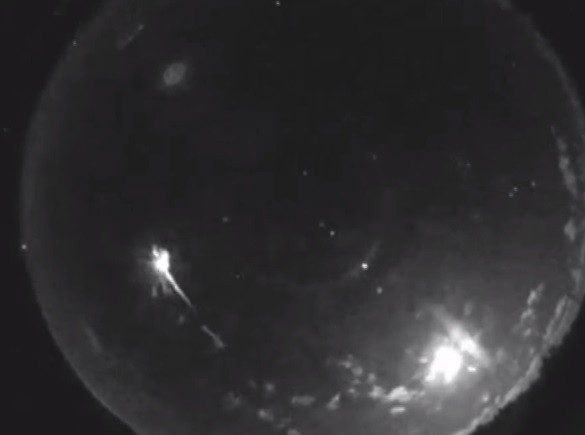Last early Monday morning, a bright light apparently streaked the skies across the southeastern U.S. where scientists have finally confirmed that this bizarre cosmic event was apparently just space junk re-entering the Earth's atmosphere.
This mysterious flash of light that blazed the skies around 1:29 ET on Monday was observed by witnesses across Louisiana to Virginia and was also picked up by meteor observing cameras by NASA located in the southeast.
According to Bill Cooke who is the head of the Meteoroid Environment Office located in NASA's Marshall Space Flight Center in Alabama, this mysterious blazing fireball was no meteor.
Cooke explains that this object was moving far too slow to become a meteor where this object struck the atmosphere at a velocity of 14,000 to 16,000 miles per hour however, even if that sounds fast, meteors often travel at a speed of 24,000 miles per hour or even faster.
The video captured by NASA revealed that this particular bright flying object on Monday morning was not a shooting star but it did hit the planet's atmosphere at a very steep angle which is not typical for a meteor, says Cooke.
Cooke explains that the speed combination with this shallow angle upon entry in the atmosphere is apparently a re-entry of a piece of space debris or something similar to that.
Based on NASA's camera footage, this bright streak is not only composed of one object but of four distinctly shaped objects that are moving fast across the early morning sky.
Cooke says that this was typical of space debris or space junk that enters the atmosphere, where these break up and the pieces fall off as one by one burns up and exudes a luminosity making them glow across the sky.
This phenomenon is expected to appear like a re-entering object where something seems like burning up in the atmosphere.
According to Vincent Perlerin from the American Meteor Society, this object may have been originated from the re-entry of a Russian SL-6 rocket body that was launched into orbit in 1992 during the Cosmos 2196 Missile Early Warning System.
To date, scientists are tracking and monitoring more than 22,000 pieces of space debris floating around Earth's orbit which are at least four inches wide and there are even millions more smaller than that which the latest technology cannot yet detect, flying within high velocities around Earth.



























